Competition Ballooning
How do balloons compete?
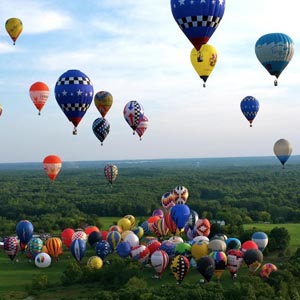 One of the most commonly asked questions in ballooning are “How do you compete in a balloon?” and “Do you race balloons?”
One of the most commonly asked questions in ballooning are “How do you compete in a balloon?” and “Do you race balloons?”
Balloons fly with the wind, so you cannot really race them, as everyone would be travelling at the same speed. The main principle of competition ballooning is to use winds at different heights, which have different directions, to navigate the balloon to targets or specific points on a map.
A typical competition, for example the World Championships, will run for a week and pilots will fly mornings and afternoons (weather permitting). Before each flight, the Event Director will set a number of tasks for pilots to fly.
There are 20 different types of tasks that Event Director can choose from to challenge the pilots. These tasks vary from targets set at specific locations (in parks or fields), to goals that a competitor must select themselves (usually road intersections), to 3D tasks during which a pilot must fly the longest path in a set airspace.
A pilot can receive up to 1000 points for each task based on how they rank against the other pilots. These points are then accumulated over the week and the pilot with the most points at the end of the competition will be declared the champion.
Markers and Loggers
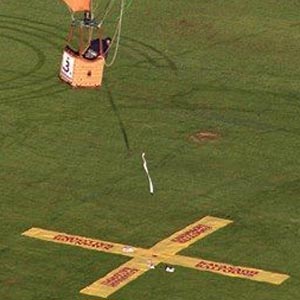 Depending on the type of task set, as the pilot reaches the target or goal, they will either throw a marker or will be measured by an official GPS logger.
Depending on the type of task set, as the pilot reaches the target or goal, they will either throw a marker or will be measured by an official GPS logger.
Markers are weighted streamers that are provided to the pilot before the flight that is marked with the pilot’s competition number. Ideally a pilot will drop their marker from just a few feet above the ground, to ensure the greatest accuracy. However, sometimes pilots may have to rely on higher winds to navigate to the target, and if they cannot get down to ground level in time, they may have to drop their markers from hundreds of feet above the ground.
The Skills Required
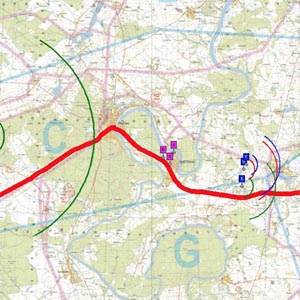 Pilots need a variety of skills to be successful in competition. Firstly, they need to have exceptional piloting skills to ensure they cannot only find the wind directions they need, but also to ensure they can control their balloon accurately to use take advantage of these winds. Often the wind direction the pilot needs could be a thin band, maybe only 50ft thick, and they need to ensure they can keep the balloon within it.
Pilots need a variety of skills to be successful in competition. Firstly, they need to have exceptional piloting skills to ensure they cannot only find the wind directions they need, but also to ensure they can control their balloon accurately to use take advantage of these winds. Often the wind direction the pilot needs could be a thin band, maybe only 50ft thick, and they need to ensure they can keep the balloon within it.
Pilots also need to be excellent navigators, using a variety of maps, compasses, GPSs and other navigational equipment. Most pilots will fly with moving map technology, using computers and GPS in the basket to not only track where they are but also plan their flights.
An understanding of weather is obviously essential; however good competition pilots will have excellent skills in understanding how weather conditions function within microclimates. Understanding the local effects of hills, rivers, forests etc. help a pilot predict what winds will be doing and how they will potentially change during the duration of the flight.
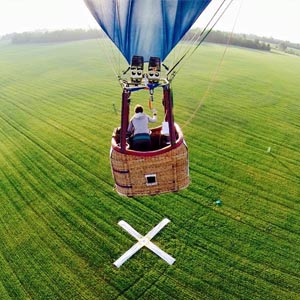 Pilots also have to be tacticians. A competition is governed by an official rule book and pilots need not only a good understanding of the rules to avoid penalties, but also need to know how to tactically use the rules to their advantage.
Pilots also have to be tacticians. A competition is governed by an official rule book and pilots need not only a good understanding of the rules to avoid penalties, but also need to know how to tactically use the rules to their advantage.
Finally, pilots have to be very focussed. A morning flight can last for 3 hours, during which they will undergo a lot of mental strain. A lot of multi-tasking is involved during a competition flight. Since the sport is reliant on the weather, a lot of things can change during the flight and pilots need to be adaptable. At the end of a long week of flying and long days, pilots need to be able to manage their fatigue and stay on top of their mental game.
Ground Crew
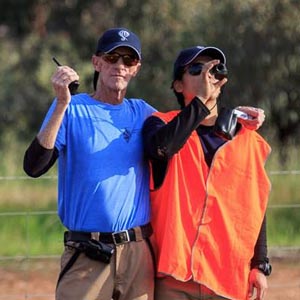 Pilots competing at the top levels will normally fly solo during the competition, however they will be part of a larger team. A successful competition pilot will have a very skilled ground crew. The team on the ground are not only responsible for helping get the balloon off the ground and picking the balloon and pilot up at the end of the flight, but they will also provide a huge amount of information during the flight.
Pilots competing at the top levels will normally fly solo during the competition, however they will be part of a larger team. A successful competition pilot will have a very skilled ground crew. The team on the ground are not only responsible for helping get the balloon off the ground and picking the balloon and pilot up at the end of the flight, but they will also provide a huge amount of information during the flight.
The ground crew will provide the pilot with weather information, such as wind directions at the targets. And in many cases, they will also provide the pilot with tactical information over the radios.
Getting involved
Competition ballooning is not just a sport for pilots. There are many ways that you can get involved in ballooning and ballooning competitions. Events are always looking for volunteers to help with the running of the competitions and crewing for balloon teams. Many of the members of the Australian Balloon Team originally got involved in the sport by volunteering at events. If you are interesting in getting involved in ballooning or competition ballooning, feel free to reach out to us (via the footer links below) or visit the Australian Ballooning Federation website.